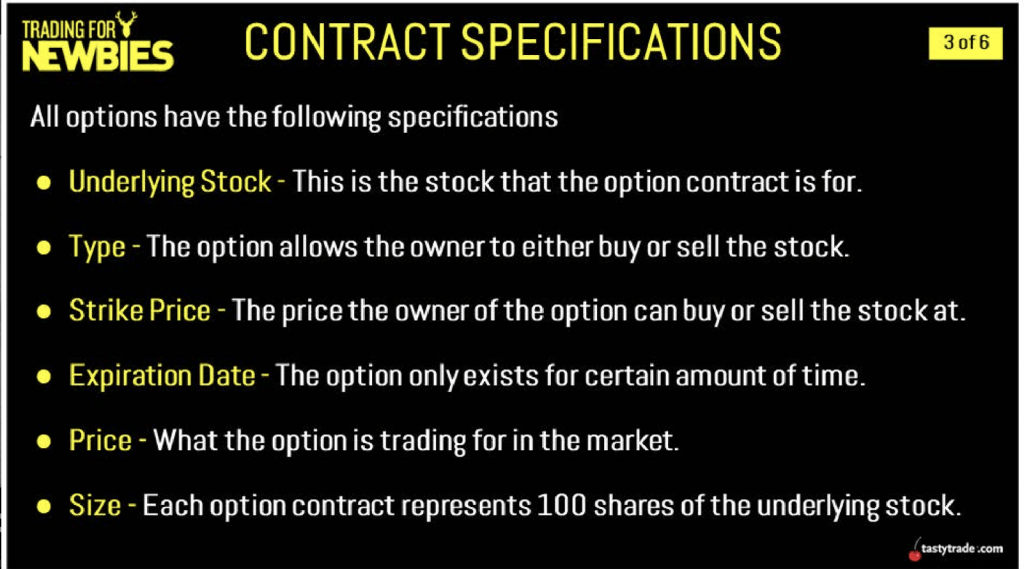Basics of Equity Options Trading

Many investors and traders are comfortable trading equities (i.e. stocks), but fewer are familiar with equity options.
Knowledge and awareness of this niche of the financial markets can serve as a robust supplement to the stock market—as a source of additional market insight, or as an avenue toward expanding one’s strategic investing/trading approach.
In terms of market insight, the well-known “fear gauge”—known as the CBOE Volatility Index—is calculated using the prices of near-term index options in the S&P 500. That means an understanding of options can provide important (sometimes critical) insight into why fear or complacency may be dominating a given market environment.
Options also offer added flexibility to stock traders, because specialized positions can be created using both stock and options that fit a wider range of market outlooks. This can be valuable for investors and traders seeking to do more in the markets than simply buy or sell stocks.
Equity options are sometimes referred to as “equity derivatives” because they “derive” their value from the price of an associated underlying equity. For example, an Apple (AAPL) option derives its value from the price of Apple stock.
One of the biggest differences between stock and options is that options expire, whereas stocks do not. This is critical to understand because the duration, or time until expiration of an option, is an important consideration when selecting an option to trade.
On top of that, another important distinction between stocks and options is the fact that options represent a right, and not an obligation. This speaks to the “optionality” of the option, whereby the owner of an option possesses a right to exercise an option, but no obligation to do so. This point will become more clear as one gains more experience with options.
An options contract offers the buyer the opportunity to buy or sell—depending on the type of contract they hold—the underlying asset. There are two types of options, calls and puts:
- Call options give owners the right, but not the obligation, to buy the underlying asset at a specified price within a specific timeframe
- Put options give owners the right, but not the obligation, to sell the underlying asset at a specified price within a specific timeframe
The “specified price” indicated in an option contract is known as the “strike price.” Whereas the “specified timeframe” refers to the expiration date. Virtually all American options expire on the third Friday of the month at market close.

Looking at a simple example, imagine that the current month is September, and that Apple stock is currently trading for $200/share. Now imagine that a trader has purchased an Apple call option with a strike price of $210, that expires in November.
A call option gives an owner the right, but not the obligation, to buy the underlying asset. In this case, the Apple call option gives the owner the right to buy Apple stock before the third Friday of November for a price of $210.
One can see how this right might be exercised if Apple stock rises above $210 before expiration, otherwise the value of the option will ultimately be worthless. If Apple stock is trading below $210, the trader would simply purchase Apple stock in the open market, as opposed to utilizing this option to buy it at a more expensive price.
The missing element from this example is of course the price of the option. The amount an investor or trader might pay to own this “right.” Option values are calculated through a combination of two values, known as the “intrinsic value” and the “extrinsic value.”
Options are also priced in terms of their “implied volatility”—which is another popular methodology for trading options.
Readers seeking to acquire a comprehensive understanding of equity options are encouraged to review a new series on the tastytrade financial network: Options Crash Course with Dr. Jim.
Dr. Jim Schultz is a longtime host on the tastytrade network. Jim’s flagship show, From Theory to Practice, explains theoretical trading concepts and provides a practical application around them.
Readers can work through the Options Crash Course when scheduling allows, and may also be interested to tune into TASTYTRADE LIVE, weekdays from 7am to 3pm Central time, to track all the daily action in the financial markets.
Sage Anderson is a pseudonym. The contributor has an extensive background in trading equity derivatives and managing volatility-based portfolios as a former prop trading firm employee. The contributor is not an employee of luckbox, tastytrade or any affiliated companies. Readers can direct questions about any of the topics covered in this blog post, or any other trading-related subject, to support@luckboxmagazine.com.



















